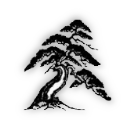HISTORY OF SHORIN RYU KARATE


In 1429, the kingdoms on Okinawa unified to form the Kingdom of Ryukyu. When King Sho Shin came to power in 1477, he banned the practice of martial arts. To-te continued to be taught in secret. The ban continued in 1609 after Okinawa was invaded by the Satsuma Domain of Japan. The bans contributed to the development of Okinawan kobudo, which uses common household and farming implements as weaponry. The Okinawan’s combined Chinese martial arts with the existing local variants to form Tode, sometimes called Okinawa-te.
By the 18th century, different types of Te had developed in three different villages; Naha, Shuri, and Tomari. Practitioners from these three villages went on to develop modern karate. The martial arts of Okinawa were generally referred to as Te, which is Japanese for “hand”. Te often varied from one town to another, to distinguish the various types of Te it was often prefaced with its area of origin. So, the styles came to be known as Naha-te, Shuri-te, and Tomari-te. They all belonged to a family of martial arts that were collectively defined as Tode-jutsu or To-de. With the popularity of the term karate, the practice of naming a type of martial art after its area of origin declined.
Shorin Ryu Karate originated in India made its way to China and then to Okinawa by the travels of the Shoalin Monks. Once known as Shuri-te, because it originated in the area around the village of Shuri once the old capitol of the Ryukyu Kingdom. Shorin refers to a Chinese Shaolin Temple in a pine forest that it originated from. Four branches ended up developing on there own from this common origin. The names of those styles are Kobayashi-Ryu, Matsubayashi-Ryu, Shobayashi-Ryu and Matsumura Seito-Ha.

